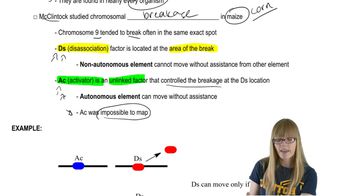Here are the essential concepts you must grasp in order to answer the question correctly.
Operon Structure and Function
An operon is a cluster of genes under the control of a single promoter, allowing coordinated expression in response to environmental changes. In this case, the operon is inducible, meaning it is activated in the presence of a specific substrate (oil). Understanding the operon's structure, including regulatory elements like the operator and structural genes, is crucial for analyzing how mutations affect gene expression.
Recommended video:
Trans-acting vs. Cis-acting Elements
Trans-acting elements are regulatory proteins that can diffuse through the cell and act on any target gene, while cis-acting elements are DNA sequences located on the same molecule of DNA as the gene they regulate. In this scenario, the reg gene is a trans-acting element that produces a protein interacting with the operator (a cis-acting element) to control the operon's expression. Identifying whether mutations are in trans or cis elements helps determine the nature of the regulatory mechanisms.
Recommended video:
Constitutive Mutants
Constitutive mutants are strains that express genes continuously, regardless of environmental conditions. In the context of the operon, a constitutive mutation suggests a failure in regulation, often due to a mutation in the reg gene or the operator. Analyzing the phenotypes of the wild type and mutant strains helps infer whether the mutation affects the trans-acting reg gene or the cis-acting operator, providing insights into the operon's regulatory dynamics.
Recommended video:




